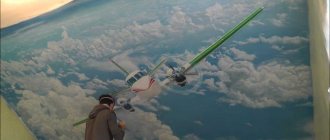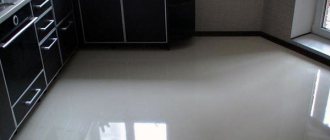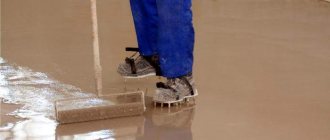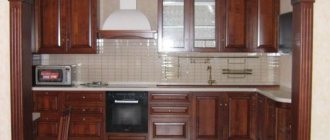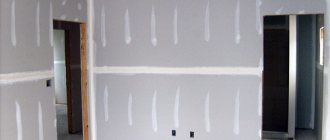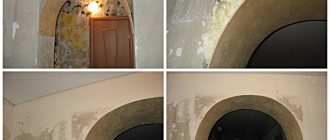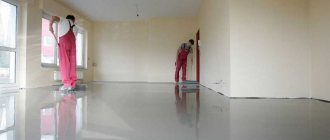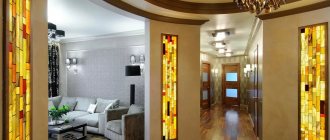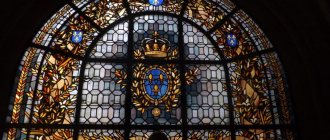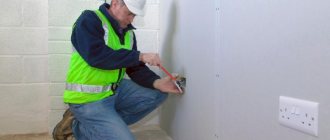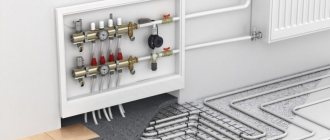How to make decorative brick or stone with your own hands
How to make decorative bricks from polystyrene foam
How to make decorative bricks from plasterboard
How to make decorative stone from plasterboard with plastering
How to make a decorative stone from gypsum in a homemade form
How to make decorative bricks from gypsum siding
How to make a decorative stone from plaster without a mold
Wall decoration will cost several times less than with purchased tiles.
Porous sponge coating
You will need not just a dish sponge, but a large natural sponge. There are several ways to apply paint:
Option 1.
Paint the wall in a basic tone and let dry. Dip the sponge into paint of a different color poured into the paint tray, and wipe off the excess on the textured part of the tray. Then apply the sponge to something paper until the excess paint is completely gone and only a light imprint remains. Now you can apply the sponge to the wall - you need the paint to lie loosely and the bottom layer to show through. Change the position of the sponge often so that the pattern is not monotonous.
How to make decorative bricks from polystyrene foam
The simplest option for creating decorative tiles to imitate brick or stonework, which requires a minimum of materials and tools. The only negative is that due to styrene emissions and high flammability, these tiles are undesirable for use in residential premises.
What you will need
- Extruded polystyrene foam 20 mm thick;
- sharp knife;
- level;
- pencil.
How to do
- Decide on the size of the tiles. A standard brick has a side surface of 250 × 65 mm, but it is not necessary to adhere to it: the dimensions can be arbitrary.
- Using a level and a pencil, mark the dimensions of future tiles on an EPS sheet.
- Use a sharp knife to cut the material into pieces along the lines. This can be done either by level (if you need to get perfectly smooth edges) or simply by hand (if you want more naturalness).
- Cut the pieces according to thickness to make two thin tiles from each. Expanded polystyrene is quite dense, so it is convenient to use a knife with teeth and cut through the pieces in several passes.
- Positioning the blade at an angle, chamfer along the contour of the tiles. Trim the resulting halves, cutting off all excess from them. Or, conversely, give the surface a rougher appearance.
- The finished elements are attached with a smooth surface to the wall close to each other or with a gap simulating a masonry joint. Then, if necessary, they are primed and painted.
Artistic wall painting "by hand"
In order for a beautiful image to appear on the wall of your room, try to adhere to the following procedure.
Step 1. Select an image and decide on the size of the future drawing. It is assumed that at this point you already know exactly which part of the room this picture will be in and why it will be there. There is a huge selection of different images on the Internet, but try to choose something simpler for the first time, and the sketch will be easier to create. You’ll draw luxurious castles in the flaming distance later.
Step 2: Prepare the wall. Professionals really like to paint on a freshly painted smooth surface, so it is necessary to putty and paint in a color that matches the background of the painting. If the drawing is intended to make up for the mistakes made during the recent renovation, then you will have to draw according to what is there.
What colors are used to paint on the walls?
Step 3. We purchase all consumables: paints, brushes, etc. All experts recommend only water-based acrylic matte paints. They are easy to mix and apply; after drying, they are not erased with a slight movement of the shoulder, like gouache. True, some people cover the drawing with a couple of layers of façade matte acrylic varnish to be completely sure. To achieve the desired shade, the paints are diluted with white acrylic paint. To obtain the required liquid (the ideal consistency is similar to sour cream with 15% fat content), add water. Just don’t get carried away, otherwise when the too liquid paint dries, unpleasant stains will remain on the wall. You need to take two types of brushes: for large strokes, wide, large and flat ones (synthetic and bristles) are suitable, and for contours and small details - small round core ones. Professional decorators also use a foam roller to draw flower petals with dotted movements. Also prepare containers for washing brushes and mixing colors. If you don’t want to sacrifice dishes, buy a set of disposable ones.
Step 4. Print out 5-10 images in black and white to make it look like a sketch. Now you need to apply a background identical to the color of the wall, because the same shade looks different on a white and green wall. After drying, apply the contours until you reach automaticity. Now you need to choose such shades so that the whole picture “plays out”. If there are a lot of similar parts in the drawing (petals or leaves), it is better to prepare simple stencils. Only after this can you proceed to painting the wall.
Step 5. Now you need to apply a rough pencil drawing to the wall. Never use a black pencil; it is difficult to erase and leaves dirty marks. It is better to use soft colored pencils. All bad lines can be easily removed with a large and soft eraser. First, the boundaries of the drawing are indicated by a line, then the largest parts are drawn. Only after this do you move on to detailing and more careful drawing. Constantly step aside to immediately see imbalances in proportions and correct them. The better you draw the image, the easier it will be to apply the paint. For those who have problems with scale and spatial orientation, the cell marking method will help. The entire area of the drawing is divided into squares, which you then draw on, just like in a school notebook. Markings can be made either with a pencil or using pieces of string attached to the wall.
Step 6. Start painting with acrylic paints. The paint must be diluted and mixed immediately before application, because... acrylic dries very quickly. Paint in several strokes to achieve volume and naturalness of the drawing, just wait until the previous layer dries. Hold the brush perpendicular to the wall. Correct any imperfections with a thin brush. To achieve smooth movements and increase enthusiasm, play your favorite music. Take a break after you've finished drawing and filling in the basic outlines. Then, with renewed vigor, proceed to small details, and, if necessary, shade the edges of the image. At the very end, we work out all the smallest contours with a thin brush, achieving volume, glare from the Sun, etc.
If, after reading this, you realized that you are absolutely not an artist, then use another method.
How to make decorative brick from plasterboard
The most popular alternative to expensive gypsum tiles. The manufacturing process is simple, but rather tedious, especially on large areas. The budget is minimal, since the cost is equal to the price of drywall, and even scraps are used. Due to the ease of processing, such tiles can be given any shape and texture if desired.
What you will need
- Drywall of any thickness;
- sharp knife;
- level;
- pencil.
How to do
- Select the size of the bricks. You can follow the proportions of real materials or come up with something of your own.
- Draw lines on the drywall using a pencil and level according to the selected dimensions.
- Using a sharp knife, cut through the top layer of paper along the marked lines. It is not necessary to cut perfectly straight using a level. It is enough just to guide the blade along the markings: small deviations will only add individuality to each brick.
- Turn the drywall over, crack it and cut away the remaining paper on the back side. Don't throw away short pieces: they can be used later as halves and small pieces of bricks.
- If desired, you can additionally cut the corners of each tile along the contour, as well as make chips and scratches to give a unique texture.
- The finished tiles are attached to the walls with tile adhesive close to each other or with the desired gaps. After the glue has dried, the top layer of paper is removed from the bricks - to do this, it is moistened and cleaned off with a chisel. Then the surface is primed, after which it is varnished or painted in the desired color.
Fabric stains
For this technique you will also need texture paint. After the first coat of paint has dried, apply a second coat using a rolled piece of fabric. There are two options here: wrap a cloth around a roller or paint with your hands, then the effect can be more controlled. If you apply the second layer of paint a tone darker or lighter, you will get an interesting shimmer.
If you take regular paint and, without waiting for the top layer to dry, rub it over the surface with a clean and slightly damp cloth, you will get the following effect:
How to make decorative stone from plasterboard with plastering
An improved version of the previous method. The basis of the tiles is the same gypsum board, but the texture is created by applying a layer of plaster. This method allows you to make thicker stones with a pronounced relief and eliminates the need to remove a layer of paper from drywall, which saves a lot of time when doing large volumes of work.
What you will need
- Drywall of any thickness;
- gypsum plaster;
- primer;
- putty knife;
- plastic trowel (trowel);
- sharp knife;
- roller;
- level.
How to do
- Using a roller, thoroughly prime the drywall on both sides and allow to dry.
- Take gypsum plaster and mix a small amount according to the package instructions.
- Using a plastic trowel, apply a 3–4 mm layer of plaster to the surface of the plasterboard. Don't try to smooth it perfectly evenly, there's no point.
- Then, applying the trowel to the sheet, work along the long side of the sheet to create the texture of the stone.
- Apply a thin strip of plaster to the edge of the tool and, holding the trowel at an angle, touch the surface of the drywall to create stripes of tops. This will give the imitation stone additional volume.
- As soon as the mixture dries a little and no longer sticks to your hands, use a pencil and a level to mark the future tiles according to the selected dimensions.
- Applying a level to the drawn lines, draw a spatula blade along them. There is no need to cut the drywall - just draw a layer of plaster.
- After the mixture has completely dried, cut the plasterboard with a knife along the marked lines, and then break the sheet and cut the paper on the back side. Level the ends of the tiles with a knife or by rubbing them against each other.
- Next, the surface of the tiles is primed again, painted in the desired color and attached to the walls using tile adhesive.
Roll instead of wallpaper
Sunday, December 09, 2012 02:30 + to quote book
Rolling with patterned rollers.
I can saw, drill and much more, I can’t cross stitch by the way, but I can’t glue wallpaper without seams and even with two people I’ll ruin everything, quarrel and send it away. And it never turned out beautifully. That's why my best friends are paint and plaster. Although there was an experience with something seamless. One roller with glue passes along the wall, the other, like a sower, throws polymer mica.
And then again Buy HERE and on Etsy at affordable prices. And easier. The main thing is not to forget to keep the roller in an upright position.
Or
Decorative painting techniques allow you to achieve special effects on the surface of walls. Here you can show not only skill, but also imagination. In some cases, through the use of various techniques, a second color is applied to the main coating. In others, paint is used to give the surface the appearance of another material, such as wood or marble.
The design can be applied to the painted wall surface using embossed rubber rollers.
Knurling is performed as follows:
• having moistened a sponge roller with paint, roll out the design using a vertical movement of the machine from top to bottom;
• the machine must be moved in a uniform, smooth motion, making sure that there are no breaks or layers in the design.
To obtain multi-colored patterns, sequential rolling of the pattern with a roller of different colors is used.
Knurling with patterned rollers gives the surface a decorative and artistic appearance, hiding defects in plaster or concrete (voids, microcracks, unevenness, scratches and other similar defects).
Rice. 115. Decorating walls with strokes and spots using rollers; a – rollers with sponges, b – roller rollers, c – process of finishing surfaces with rollers
Knurling is done with rollers with various patterns, which are used to roll up a fairly thick layer of textured putty or painting paste (paint with a high content of fine mineral filler, fraction up to 0.1 mm, and a large amount of pigments).
Patterned rollers are made by gluing soft leather, foam rubber, porous rubber, sponge onto a hard rubber or wooden cylinder (Fig. 115, a), on which various patterns are applied: linear (Fig. 115, c), geometric, lined (Fig. 116 , a), stylized (Fig. 117, a) or naturalistic motifs of the plant world, indefinitely structural (Fig. 118, a).
Rice. 116. Decorating walls with strokes and small patterns (a) with a double roller with spring ties (b)
Wooden cylinders are impregnated with drying oil, which protects them from swelling. The width of the rollers depends on the purpose: wide rollers (up to 20 cm) are used to finish large surfaces, small ones (3 cm) with the same pattern are used for places in the corners of the room, near door and window openings.
To apply lines, roller rollers are used (Fig. 115, b); they are detachable, which allows you to apply strokes in two colors (Fig. 115, c). Line finishing of surfaces is performed with a double roller (Fig. 116, b). One of the rollers, the nutrient roller, is made of microporous rubber. The patterned roller is pressed against the feed roller by springs.
The rollers used to make designs based on the plant world (Fig. 117, a) consist of a rubber cylinder on which a design is applied.
Rice. 117. Finishing surfaces with stylized patterns (a) and a set of rollers for finishing (b)
The pattern rolled with a roller can be one-, two-, or three-color. Designs in two or three colors are rolled using a set of rollers. This makes it possible to create a beautiful color combination on the surface being finished.
Fig. 118. Finishing surfaces with an indefinite structural pattern (a) and a set of rollers for finishing (b)
To improve the quality of work and labor productivity, a special tool TsNIIPS is used for rolling the pattern (Fig. 119, a), which consists of a reservoir 2 for paint, two metal feed rollers 1 that supply paint, a squeegee shield 4 that removes excess paint from the feed roller , and patterned roller 3. The design of the tool allows rolling surfaces only in the vertical direction. When using the tool, a clean and uniform pattern is created over the entire surface, as there is a continuous supply of the coloring composition to the pattern roller. The reservoir is filled with paint so that it does not fall directly on the pattern roller and does not overflow.
The device shown in Fig. 119, b, surfaces can be rolled in different directions. To obtain a pattern of equal saturation, monitor the saturation of the nutrient roller, lubricating it with the painting composition using a hand-bristled brush.
Rice. 119. Tool for rolling surfaces with rubber rollers: a - TsNIIPS apparatus, b - device for rolling with a roller made of microporous rubber; 1 — nutrient rollers, 2 — reservoir, 3 — patterned rollers, 4 — squeegee, 5 — microporous rubber roller
To apply the pattern, prepare a painting composition from aqueous chalk paste with pigments, which is sealed with a 10% solution of animal or vegetable glue, and 20-30 g of drying oil is added to a bucket of the finished composition. If the compositions are prepared using CMC glue, the chalk mixture with pigment is sealed with a 7-8% glue solution. Glue-wax or glue-oil-wax compositions, ENT emulsion and casein-wax emulsions, various synthetic putties (KLM, emulsin, latex-perlite) are also used. Pigment pastes of the required color are added to the putties.
The consistency of the paint or putty is determined by test painting. The consistency largely depends on the type of rubber from which the pattern is made: hard rubber requires thicker paint, soft rubber requires thinner paint.
How to make a decorative stone from gypsum in a homemade form
Another way to produce tiles is by casting from a gypsum mixture. Production is even cheaper and easier. The simplest form with sides is made from a piece of chipboard, cable duct and film. Stones and bricks are obtained with the correct geometry and texture, not inferior to purchased tiles.
What you will need
- Sample tile;
- gypsum;
- bucket;
- plastic bottle 5–6 liters;
- a piece of chipboard;
- oilcloth;
- fiberglass;
- dish sponge;
- cable channel 12 × 12 mm;
- screws with a press washer;
- plastic trowel;
- putty knife;
- roller;
- screwdriver
How to do
- First of all, make a mold. To do this, find a suitable piece of chipboard or plywood. Take a thick oilcloth and cut it to the size of the base.
- Remove the covers from the cable channels and attach the boxes around the perimeter of the piece of chipboard with screws, thus pressing the oilcloth.
- Cut the cable channel covers into pieces that will fit the size of the tiles. Place them in place and then cut boxes along them. Later, a spatula will be inserted into these cracks to separate the bricks.
- Mix gypsum with water in a cut plastic bottle until it becomes liquid sour cream and add fiberglass to give strength. Instead, you can tousle a polypropylene bag and simply cut threads from the fabric.
- Pour the plaster mixture into the mold and distribute it evenly. Tap the edges lightly to ensure there are no voids. When the casting has dried a little, stir it with a plastic trowel to give it a stone texture.
- Divide the not yet hardened plaster into tiles. To do this, insert a long spatula into the slots of the frame and press down. Use a dish sponge to blot the casting to form a porous structure.
- Remove the frame from either side and remove the tiles one at a time. Carefully pick them up with a spatula and, if necessary, trim them along the joints with a knife.
- Next, the finished stones are primed and painted. Then they are attached to the walls using tile adhesive.
Decorating walls: the simplest way to create relief
With the advent of modern interior materials, although wallpaper has not ceased to be the most popular finishing option, especially when the task is to do it “cheaply and cheerfully,” it has significantly lost its position. Various decorative plasters are becoming increasingly popular; due to their versatility, they allow you to achieve a lot of effects when using the same composition. Most often this is an imitation of any natural surfaces, stone, fabric and even metal, and the severity of the relief depends mainly on the fraction of the abrasive present in the composition.
However, the cost of compositions with fillers, as well as certain difficulties in applying and creating a pattern, is a significant disadvantage that scares away potential consumers. But you can get the desired relief at a lower cost, and the application method is much more tolerant of amateurs.
Acrylic plaster and polyethylene
The use of expensive compounds on marble chips or marble flour, special stencils, impressions, rollers and trowels is rather the prerogative of professionals. And to decorate the walls in an apartment, room or even zone, you can get by with the simplest materials and tools.
- Acrylic finishing putty - ready-made in buckets is more expensive; If you have experience with diluting, you can take gypsum finishing putty and seal it with an acrylic primer (ready-made or diluted with concentrate).
- Primer - with deep penetrating ability, but without filler; putty adheres well to the surface without abrasive.
- Spatulas - you can also work with a trowel, but this is also not the cheapest tool, and to apply the base layer on which the relief will be created, two spatulas are enough (for one performer).
- Polyethylene - the area of the film should be approximately one and a half times greater than the area of the surface to be finished.
- Paints, waxes, mother of pearls - depending on the desired effect.
- Rollers, sponges, brushes - depending on the chosen decorative layer.
Surface preparation
Both the decorativeness and durability of the plaster directly depend on the quality of preparation of the base; it must be strong and even. All previous finishing layers are removed - old wallpaper and paint come off easier if you wet the walls with a weak primer solution, this is more effective than wetting with just water. After some time, the residue can be easily removed with a spatula. Cracks and potholes are pre-sealed with starting compounds, and the surface is thoroughly primed. After the primer has dried, if necessary, apply masking tape to the joints of the plaster with the already finished areas.
Applying plaster, creating relief
The plaster is applied from the corner, ending in the opposite one, the plaster is applied with a small spatula to a large one and spread over the wall with a large one. The entire wall should be covered in one go - leaving a piece or half for tomorrow is not recommended. If you still haven’t mastered it, make a “ragged” line with a descending layer - the last scratch strokes. This will make the transition between fragments less noticeable, but it is better to invite an assistant and complete the wall in a day. Perfect smoothness is not required, but the layer should be uniform, about 2 mm thick.
You can create a relief using film with just one hand, but it’s also easier with two people – one puts polyethylene on the applied plaster, the other holds the rest so that it doesn’t stick randomly. They begin to form a pattern, just like plastering - from the corner, applying a film and creating folds on it, a heavily crumpled film will give a pronounced texture.
You should not use polyethylene that is too dense, it is more difficult to work with, but if you need a slight “clumsiness”, it is just right. It is convenient that under the film the plaster remains wet longer, and there is enough time to carefully work out the relief; you can first go through the entire surface, and then add “frost” in the right places. Depending on the type of plaster used, the wall will be partially ready in 12-15 hours, after which the film is removed. If the layer is thicker in places and the plaster has not yet dried, the finishing touch is postponed until it is completely dry.
Another option for creating a relief using polyethylene is not to apply film over the entire wall, but to cover the entire surface with prints using a crumpled plastic bag or a crumpled piece of film. The relief turns out to be less uniform, with characteristic “spines” formed when the plaster layer is pulled behind the film when torn off. In its original form it does not look very attractive, but if you slightly smooth out the texture, it turns out interesting.
Finishing
There are a lot of decorative options for such plaster - it is coated with wax, painted in one or several tones, and lightened in fragments. The wax is applied with a roller or sponge; if the plaster was painted in mass, use colorless or glossy; if the plaster is white, it is first painted. An interesting effect is obtained by painting in two approaches - first with a relief roller, and then with a smooth roller. The first pass will allow you to fill all the potholes with paint, and after processing with a smooth roller, the paint will remain only on the relief. To achieve the effect of antiquity, first the plaster is painted in a rich color, and then, before the paint has dried, it is carefully removed from the protruding folds with a rag, or after drying, it is lightly sanded over, resulting in characteristic abrasions.
When it comes to major renovations, sealing cracks may not be enough and more careful preparation will be required; read how to level walls. For lovers of smooth, marble coatings - an article about the Venetian. Interesting minimum budget and presentable appearance - find out how to make liquid wallpaper with your own hands. The video contains ideas for original interior design from a famous exhibition.
How to make decorative bricks from gypsum siding
An easy way to get high-quality castings without the hassle of making a mold. The base siding panel is used as a matrix for the tiles; the pattern can be selected at your discretion. The tiles are easily separated from the vinyl, the elements are thin and of very high quality.
What you will need
- Basement siding;
- gypsum;
- PVA glue;
- fiberglass;
- putty knife.
How to do
- If the siding panel is long, cut it into two parts for convenience.
- Prepare a gypsum mixture at the rate of 0.6 liters of water, 1 g of fiberglass and 100 g of PVA glue per 1 kg of gypsum. First, dissolve the glue in cold water, add fiber and stir well. Gradually add gypsum and bring the composition to a homogeneous mass.
- Turn the panel over and pour the mixture into the mold cavities. Tap the edges of the die for better filling. Level the casting with a spatula, removing excess plaster from the edges between the tiles.
- Wait for the workpieces to dry completely. Hold the mold suspended and, by bending slightly, release the edges of the tiles, and then remove them entirely.
- Using a spatula, cut off a thin crust along the contour of the tiles. Before the next pour, rinse the mold with water and remove any remaining plaster.
- Next, the stones are primed on both sides and laid on the wall using tile adhesive. If you are satisfied with the white color, it is enough to cover the surface with transparent varnish. If desired, the tiles can be painted.
walls
Guys, the question is this. There are walls, painted in two layers of some kind of colored paint, such as whitewash/grout (under the paint there is a panel slab without plaster). as I was told they used to do this in the 70s - it was called “roll-up”. I started peeling off the old wallpaper, and underneath it was this roll in two layers. I also remove it with a spatula and a wide chisel. Damn, it took two people more than a day to do one room - my hands ache (and I asked myself, is it necessary? Or can I put putty on top of it, having previously primed it? Which is better? - should I rip it off completely to the slab or leave it like that?
If it is not crooked, then leave it as is. To make the wallpaper stick, first apply some kind of impregnation, there are a lot of them now) Or, as an option, soak it in wallpaper glue.
Well, it’s not a fact that I don’t need to tear it off in my Stalinka, no matter how much they glue it to the paint, everything flies off, I think it’s labor-intensive to tear it off, but making a notch will be just right!
I filmed the chalk roll all over the house. On walls and ceilings. A special tool was used to scrape the wet one. The ceiling was the hardest part, but a couple of hours was enough for one room.
Chalk can hardly be strengthened with any soil. Nothing will stick except paint.
What kind of special tool is this? I already forgot about the ceilings - I’ll make tension ones and it will go where it all goes from here. I've already earned my bugs and it's only in one room-(
The paint there is kind of strange, really like chalk. and what kind of notch?
with an ax on the wall bale-buck-buck
with an ax on the wall bale-buck-buck
. It would be more convenient to use a pneumatic chisel))) when I was doing renovations in an old apartment (late 80s), I glued the same crap and all the corners of the rooms with “serpyanka” with hide glue – you still can’t get it off. )))
with an ax on the wall bale-buck-buck
this is some kind of hell)) while I continue to tear off all the old stuff ((there are no other options - “religion” does not allow me to sew everything up with plasterboard)
Why don’t the Uzbeks reach you? , we have 500-700 rubles. a day and work 10-12 hours, if you say dig, they dig, they say carry, carry. YU)))
They won’t work for us for such pennies. Looks like they've beaten off almost everything) it's a shitty job. now fines are next in line))
Guys, the question is this. There are walls, painted in two layers of some kind of colored paint, such as whitewash/grout (under the paint there is a panel slab without plaster). as I was told they used to do this in the 70s - it was called “roll-up”. I started peeling off the old wallpaper, and underneath it was this roll in two layers. I also remove it with a spatula and a wide chisel. Damn, it took two people more than a day to do one room - my hands ache (and I asked myself, is it necessary? Or can I put putty on top of it, having previously primed it? Which is better? - should I rip it off completely to the slab or leave it like that?
PS there will be wallpaper on top
Why tear off something that cannot be peeled off? tear off what comes off easily, putty on these areas and roll everything with water-based emulsion, otherwise the colored paint will show through the wallpaper (through non-woven wallpaper, for sure).
What is it needed for?
Decorative rollers are used to apply various patterns and reliefs. A similar result is achieved thanks to various types of textures embossed on their nozzles. Thanks to its ease of use, the implementation of interior solutions in the design of a room will be within the power of anyone and without the additional help of specialists. The main positive feature of rollers is the fact that the cost of purchasing them pays off due to their long service life, as well as versatility.
Any paint is suitable for working with a textured roller. In some cases it is used for plaster. Therefore, before purchasing this or that model, you should study all the varieties of this tool.
Previously, in order to give the surface the necessary relief, they used all kinds of improvised objects - a hard brush, a comb, a sponge, knitting needles. Today, the available range of construction tools makes it possible to choose a roller with a ready-made pattern for decoration. With its help, a real relief pattern is created on the wall, ceiling or interior items and furniture.
All types of rollers are united by their simple design.
It consists of four components:
Textured rollers can be worked in several ways. The first option - stencil - involves using a decorative tool by stamping an image. The second method involves treating a wall or ceiling with a rough roller to obtain a pronounced result.
Depending on the type of surface of the nozzle, there are several types of tools.
The nozzle can be made of the following materials:
- textile;
- leather;
- fur;
- tree;
- Styrofoam
Rollers with a silicone or rubber nozzle with a pattern will create a wallpaper-like pattern on the wall. There are rubber nozzles with a relief on the surface, when performing work with which you can get the effect of “rain” or “polka dots”.
For high-quality and beautiful painting, foam rollers must have deep pores of different sizes, due to this, marks in the form of peculiar craters or burst bubbles are formed on the wall. A tool with a plastic cylinder leaves non-trivial patterns on the walls, forming various kinds of bulges.
The soft texture of the nozzle when plastering creates a “fur coat” effect. Decorative fabric rollers with a crinkled texture imitate a marble finish; to imitate natural stone, a tool with a leather attachment is used.
Fleecy rollers create a “fur” effect. The size of the pile and the material of such a tool are distinguished by their diversity. The raw material for making the nozzle can be either natural fur or polyamide threads.
Wooden rollers will serve perfectly for a pronounced shaped decor. A tool with a hard coating will be the most suitable option. The cost of such a painting device is higher, but this is easily compensated by the possibility of its reusable use, as well as its environmental friendliness.
The “brick” effect on the wall will be obtained when working with a foam tool, the surface of which is divided into rectangles in a checkerboard pattern. The pattern in the form of bamboo stems is obtained from rollers with corresponding cut grooves.
All types of rollers - rubber, leather, sponge and others are suitable for working on a flat surface. However, wood and metal rollers are considered most suitable for plastering. They are not recommended for use with oil paints, as they are not able to retain a sufficient layer of paint on the surface.
To upgrade ordinary foam rollers, you can use twine or pieces of foam , placing them diagonally or in any other direction. This method will help create a natural pattern, for example, repeating the structure of the bark of a tree. To create a “frosty morning” ornament, you should use some textured crumpled fabric (cotton, linen). The roller is wrapped with the selected material and then this texture tool is used in surface decoration work.
When purchasing a roller, always take into account the volume of future work. For large areas to be painted, a tool with a long handle and a large roller is ideal. Rolling stencils and processing corners is done with a smaller roller.
Types of decorative plaster designs and how to apply them yourself
Nowadays everyone wants to make their interior memorable and different from others. This is why new ways are being created to decorate the walls in a room! One such solution is decorative plaster designs. This is a creative process and requires a certain level of professionalism, so the work should only be trusted to competent specialists.
Today you can find out what options for stylish wall decoration using decorative plaster exist, how to bring them to life in your own interior, and also find out what the features are during the creative process.
Rag, sponge, broom: 6 stylish textures for walls with commonplace tools
Painting is one of the fastest and most economical solutions for wall decoration. To prevent a plain painted wall from becoming boring and boring over time, there are many ways to make this type of decoration more interesting: paint it in several colors, use a stencil, or make stripes using masking tape. We wrote about these and other methods here: “8 ideas for original wall painting.”
But what to do if you don’t want to introduce a variety of colors, and the walls in their original painted form do not bring satisfaction? Various textures and textures created when painting with simple and cheap tools come to the rescue.
Types of decor, methods of applying three-dimensional images and photos
Drawings on the walls are made using a special material, that is, decorative plaster, which consists of synthetic ingredients and some mineral rocks. The main thing in its use is that when applying decorative plaster, you can hide defects on the walls, including cracks, unevenness or chips. The material is also quite moisture resistant and does not absorb unpleasant odors, so it can be used in the bathroom and kitchen.
People also choose decorative plaster because there are many options on the market, ranging from color to texture, thanks to which you can achieve different textures:
- crumpled paper;
- velvet;
- tree;
- even a palm leaf!
The decor can be anything you want, since nothing limits your imagination here. The most commonly used options are:
We will tell you more about each of the options.
Flowers and leaves
Decorative plaster with images of flowers is chosen for ceiling decorations or images on columns. This type of relief is one of the most difficult, as it does not have clear lines. Its execution requires special skills and experience. One of the features is the preparation of the material for applying the pattern:
- A medium-sized ball is formed from thick crumpled paper.
- The finished paper ball is tightly wrapped in polyethylene. With its help you can start decorating the walls.
The color application technology is as follows:
- the resulting paper ball is applied to the undried plaster;
- holding it at the base, the ball scrolls, thereby forming the contours of the flower;
- the subsequent application of the pattern is done close to the previous one to create a continuous floral pattern;
- The final stage after the plaster has dried is painting it and applying glitter.
Wave
This composition is the most common, since its application does not require special professionalism, so even a novice master can cope with the application of waves. In this way, you can create the effects of sea waves in the interior, which, if done correctly, creates an unusual and original design.
Decorative plaster, with which the waves are applied, has a special composition: acrylic and latex, to which is added:
For those who like to stand out, you can add to the mix:
This plaster is made independently or ordered from specialized stores.
To apply a wave, it is necessary to prepare the surface, which does not have to be perfectly flat:
- To begin with, the wall is puttied.
- Then, using a spatula, apply decorative plaster 1.5-2 centimeters thick.
- Afterwards you can begin to form the drawing. To do this, characteristic waves are applied using a trowel, but this must be done without delay, since after the mixture dries it will be impossible to correct the patterns.
- After a few days, you can begin painting the plaster, for which acrylic paints with increased wear resistance are used. The color is selected solely based on the preferences of the interior owners.
Stripes
If plastering “waves” does not require skills, then what can we say about stripes! These are the same waves, but without smooth bends, and made strictly to the level. It is better to use an acrylic substance for decorative painting, since it dries a little longer than its analogues, and therefore the master will have more time to correct unevenness and not spoil the texture.
Before starting work, it is better to prime the walls. When applying the “stripe” pattern, you must follow the standard scheme:
- Apply an even layer of putty.
- Calculate the distance of decorative stripes from each other.
- To create a texture, you can use a special brush, which, passing over the wet plaster, creates characteristic vertical or horizontal stripes.
- If desired, the walls are also painted and varnished.
Circles
Decorative plaster made in the form of circles can give any room design an original look, since curved lines provide an unsurpassed highlight!
- Before starting work, the basis is the same walls leveled with putty, after which decorative plaster is applied to them in an even layer.
- Next, using a trowel or brush, circles are drawn, which do not necessarily have to be ideal sizes. Decorative plaster is different in that way - it has no specific standards, it is unique and inimitable in its own way. No master will make completely identical patterns, so be creative and don’t adhere to strict standards!
Paintings and frescoes
Creating paintings using plaster is a difficult job, but the result will not make you regret your decision. To do this, you will need a solution and a stencil, which can be made of cardboard or thick paper.
- Next, you need to place the resulting stencil against the wall, apply a layer of plaster on top of it, then peel the stencil off the surface and clean it for subsequent use or continuation of the complete picture.
- The resulting painting or fresco must be dried, after which it is varnished, painted with special paints and used for its intended purpose.
How to work with a stencil roller for walls?
Interior decoration is an interesting and exciting process, for which you will need to show all your imagination and creativity. Thanks to the decoration of the walls, you will get a stylish and extraordinary interior that will embody the individuality of the owner. Recently, stencils are increasingly being used to create DIY decor. One of the most successful options is to use a stencil roller. This tool can be purchased in an online store or in specialized stores.
How to make interior wall decoration with your own hands?
After you have learned about the types of decorative plaster patterns, you can safely accept information about the sequence of their application. It is important to follow the steps that you will have to go through when applying decorative patterns to the wall:
- Selection of working tools and plastering material. As for the tools, stock up on: a trowel, a spatula, a rule, a bucket for mortar, a construction mixer, a roller with a tray and a grater to complete the polishing. From building mixtures you will need plaster, primer and fixing varnish.
- Preparation of wall surfaces: Here you will need to remove all furniture and interior items from the room in which the work will be done, cover the floors with film so that the plaster solution does not get on it.
- Place protective films on window frames.
- Also, all switches, sockets and door frames are removed from their usual places to avoid damage.
- If you are working in a non-residential area, then bare walls must be leveled using cement plaster.
- If the drawings are applied already in a living room, then it is necessary to apply a deep penetration primer, and then proceed to the main stage of pattern formation.
- The first step is to take a bucket and dilute the mixture in it according to the instructions on the package. If the store sold it already liquid, then all that remains is to open the container and get to work.
Technology of applying putty to the wall with a roller
Most people associate applying plaster with a trowel. But most often it is used only for leveling walls, applying a thick dense layer of material, and other complex manipulations. But to prepare walls for applying paint/wallpapering or to create a beautiful texture, it is more advisable to use a roller.
The article will discuss in what cases you can and should use a roller and how to use it correctly.
- Using a roller to apply putty
- Advantages and disadvantages
- Can it be used for wet mix and finishing?
- Basic technologies for applying putty with a roller
- Surface putty “to tear off”
- Applying a fur coat
- Creating a texture with a roller
- Workflow Description
- Tips and tricks for work
Paint cost
In order to create unique designs and frescoes from decorative plaster, you will need special paints. They need to be selected based on the features of the image, the expected result, and also based on the budget of the planned repair work.
If we talk about the cost of such paints, it completely depends on the manufacturer, composition, as well as the volume of packaging. So, for example, a kilogram of paint can cost 220 rubles, or maybe 3000, so everyone will find a material depending on their financial capabilities and preferences.
To summarize, I would like to say that patterns made from decorative plaster are one of the best ways to make your interior original. At the same time, you can do it on your own and not spend money on design developments. Almost every guest in your home will like this solution, and no additional care for the walls will be required, so don’t hesitate and make a choice in favor of such an unusual room decoration!
Source: okcomfort.com
Method of use
Stencil rollers are great for beginners, as working with them allows you to avoid unnecessary smudges of paint and varnish materials. As a result, the ornament will be neat and uniform, without sharp transitions of shadows and shades. Although, the decor may not look as artistic as if it were made with a brush. At the same time, it is much easier to make it.
When working with this stencil tool, you can use many available tools, which allows you to save a lot.
For example, paint can be mixed in disposable bowls or other plastic containers. In this case, you can take an ordinary household sponge that is suitable in size. To remove excess paint, you can use disposable paper napkins or towels.
What is textured plaster?
By and large, this is the same ordinary plaster, only its composition is enriched with granite and marble chips and quartz sand.
The pattern depends on how exactly such plaster is rubbed down immediately after application. Watching a video of applying textured plaster with your own hands will help you clarify this issue.
Beginners will appreciate the ease of application and texture design. Also, in addition to the advantages of such plaster, it masks minor imperfections on the wall.
Decorative painting of walls using fabric
By performing decorative painting with fabric, you can get a more obvious design compared to the method that uses a brush or sponge. This painting is carried out in several ways.
The paint can be applied with a cloth after crumpling a piece of paper in your hand, which allows the pattern on the wall to become clearer and more defined. If you remove a little paint or roll it out with a rope, you will create a softer, less expressive design. But this option is most likely only suitable for painting specialists, because...
Creating a textured surface without special material
It is clear that textured putty is not cheap and it is beyond the means of most people. Well, if we decide to bring beauty to our own home, we will always find a way out.
In this case, the solution is ridiculously simple - do-it-yourself textured plaster from ordinary putty. So, if a certain section of the wall needs to be treated with this method, then it is covered with masking tape.
If the wall is all over, then, accordingly, masking tape will not be useful. The putty is usually applied with a spatula, spreading evenly over the surface.
The layer of this plaster should be no thicker than 10 mm. The layer should set a little, only in this case do they start decorating.
Source: svoimirukami.guru
What is textured plaster?
By and large, this is the same ordinary plaster, only its composition is enriched with granite and marble chips and quartz sand.
The pattern depends on how exactly such plaster is rubbed down immediately after application. Watching a video of applying textured plaster with your own hands will help you clarify this issue.
Beginners will appreciate the ease of application and texture design. Also, in addition to the advantages of such plaster, it masks minor imperfections on the wall.
Dimensions
Due to their simple design and good functionality, rollers are an almost irreplaceable attribute used in the process of interior decoration.
By size they are divided into the following types:
- mini - with their help, work is carried out in small areas, the rollers are convenient for applying stencils, and have a width of up to 150 mm;
- midi is the most popular type of instrument, universal in use, its width is 150-200 mm, with a diameter from 50 to 90 mm;
- maxi-tool is used for working on uneven areas, with aggressive materials and structural types of paints. Designed for painting large areas, which is why it is also called a façade roller. Its minimum width is 250 mm, diameter - from 80 mm.
As practice shows, the larger the width of the tool, the faster the process of applying the coloring composition will go. But, armed with a narrower tool, it becomes possible to obtain a clearer pattern structure as a result of the work.
The result of the work done largely depends on the quality of the purchased product. Until recently, instruments in this category were required to undergo testing for compliance with GOST standards. Manufacturers of construction tools today offer textured rollers in large quantities and assortments.
Creating a textured surface without special material
It is clear that textured putty is not cheap and it is beyond the means of most people. Well, if we decide to bring beauty to our own home, we will always find a way out.
In this case, the solution is ridiculously simple - do-it-yourself textured plaster from ordinary putty. So, if a certain section of the wall needs to be treated with this method, then it is covered with masking tape.
If the wall is all over, then, accordingly, masking tape will not be useful. The putty is usually applied with a spatula, spreading evenly over the surface.
The layer of this plaster should be no thicker than 10 mm. The layer should set a little, only in this case do they start decorating.
Source: svoimirukami.guru
Painting technology
After completing the preparatory work, you can begin the process of painting the walls.
For staining you will need:
Paint container
The painting material itself
The painting process is not particularly difficult, the main thing is to be careful and paint the entire surface of the walls at once.
Since water-based paint is most often used for decoration, here we will not describe in detail the entire painting technology; you can read about this in the article painting walls with water-based paint.
